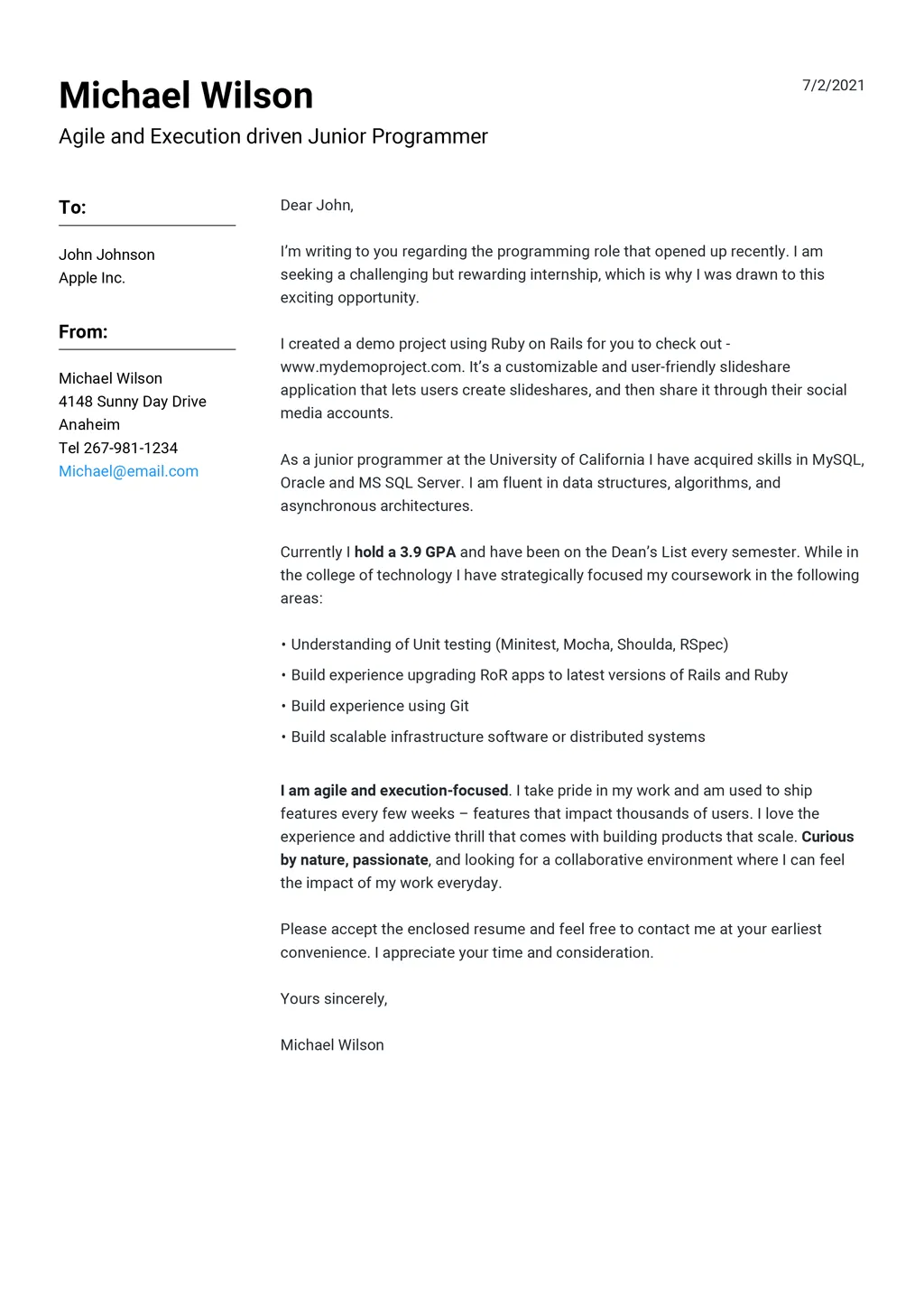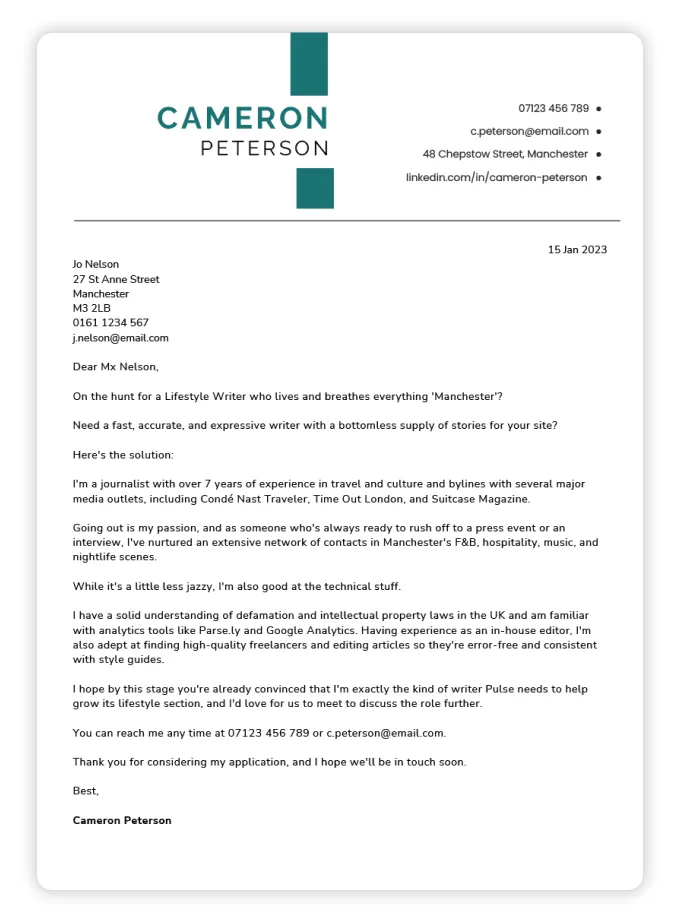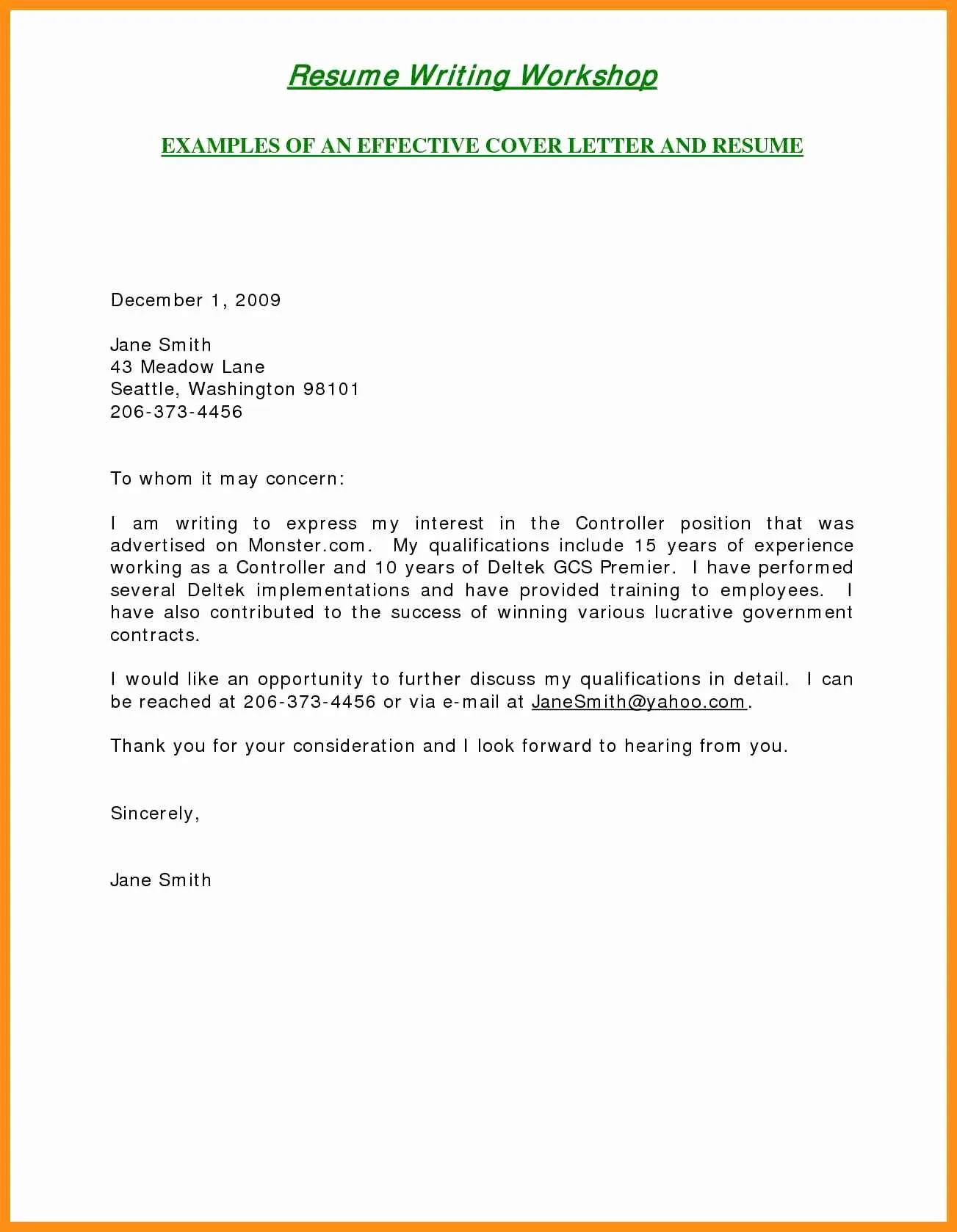What is a Cover Letter and Why is it Important
A cover letter is a crucial document accompanying your resume when applying for a job. It serves as your personal introduction, allowing you to elaborate on your qualifications, skills, and experiences in a way that a resume alone cannot. Think of it as your opportunity to make a strong first impression and convince the hiring manager that you are the perfect fit for the role. Unlike a resume, which provides a factual overview, a cover letter lets you showcase your personality, writing skills, and genuine interest in the specific position and company. It is also a chance to address any potential gaps in your resume or explain why you are making a career change. Therefore, a well-crafted cover letter is your secret weapon in the job application process, significantly increasing your chances of landing an interview.
Cover Letter Secrets to Impress Section 1 Show Your Enthusiasm
One of the most effective cover letter secrets is to demonstrate genuine enthusiasm for the position and the company. Hiring managers want to see that you are genuinely interested in the opportunity, not just looking for any job. Express your excitement about the role, the company’s mission, and the potential contributions you can make. Research the company thoroughly to understand its values, goals, and recent achievements. Then, weave this knowledge into your cover letter, showing how your skills and experiences align with their specific needs. By showing genuine interest and passion, you immediately distinguish yourself from other applicants who may be sending generic cover letters. This enthusiasm should be reflected in the tone of your writing, using positive and engaging language that captivates the reader from the start. Remember, people are drawn to those who are passionate and excited, so let your enthusiasm shine through your cover letter.
Highlight Your Skills and Experience

Your cover letter should be a strategic showcase of your most relevant skills and experiences. Don’t simply reiterate what is already in your resume. Instead, focus on a few key accomplishments and tailor them to the job requirements. Review the job description carefully and identify the core skills and qualifications the employer is seeking. Then, select specific examples from your past experiences that highlight those skills. Quantify your achievements whenever possible. For example, instead of saying “Managed projects,” say “Managed five projects simultaneously, resulting in a 15% increase in efficiency.” This type of specific and measurable data will make your achievements more compelling and demonstrate your impact. Moreover, relate your skills to the company’s needs, explaining how you can contribute to their success. Show them that you understand the challenges and opportunities and how your expertise can help them achieve their goals.
Tailor to the Specific Job Description
Generic cover letters are easily spotted and often discarded. To make your cover letter stand out, customize it for each job application. This involves more than just changing the company name. Read the job description carefully and identify the specific keywords, requirements, and company values. Then, integrate these elements into your cover letter. Use the same language the employer uses, demonstrating that you understand their needs and speak their language. Address the specific needs and challenges mentioned in the job description. Explain how your skills and experiences align with their requirements. Show that you have done your homework and understand the role and the company. This personalized approach signals your serious interest and attention to detail. It tells the hiring manager that you are not just sending out a mass application but that you genuinely want this specific job and are prepared to contribute to the company’s success.
Cover Letter Secrets to Impress Section 2 Formatting for Impact
The formatting of your cover letter is as important as its content. A well-formatted cover letter is easy to read and visually appealing. It reflects professionalism and attention to detail. Use a clear and legible font, such as Arial, Calibri, or Times New Roman, with a font size between 10 and 12 points. Maintain consistent formatting throughout the document, including spacing, margins, and paragraph alignment. The letter should be well-structured, with clear paragraphs and headings to guide the reader. Avoid long blocks of text, which can be overwhelming. Use bullet points or numbered lists to highlight key skills or accomplishments. Proofread your cover letter meticulously for any spelling, grammar, or punctuation errors. These errors can create a negative impression, undermining your credibility. A clean and well-formatted cover letter demonstrates your professionalism and respect for the hiring manager’s time.
Keep It Concise and Focused

Hiring managers are busy, so keep your cover letter concise and to the point. Aim for one page, or no more than three or four paragraphs. Each paragraph should focus on a specific idea or accomplishment. Avoid unnecessary jargon or overly complex sentences. Use clear, concise language that gets your message across quickly. Focus on the most relevant information and avoid rambling about your entire work history. Your goal is to highlight your key qualifications and make a compelling case for why you should be interviewed. Get straight to the point and make every word count. The more focused your cover letter, the greater the impact. Brevity also demonstrates respect for the reader’s time, showing that you understand their needs and priorities. Ensure every sentence serves a purpose and contributes to your overall message.
Use a Professional Tone
Your cover letter should always maintain a professional tone. This means using formal language, avoiding slang, and refraining from overly casual or informal expressions. Address the hiring manager by name, if possible, and use appropriate titles, such as “Mr.” or “Ms.” Proofread carefully to eliminate any typos or grammatical errors, as these can damage your credibility. Maintain a positive and confident tone throughout the letter, showcasing your skills and experiences without being arrogant. Avoid negativity or complaining about previous jobs or employers. Show respect for the company and the hiring manager. Ensure your language is polished and free of jargon. A professional tone demonstrates your respect for the opportunity and your ability to communicate effectively in a business environment. Moreover, it reflects well on your character and your ability to interact professionally with colleagues and clients.
Cover Letter Secrets to Impress Section 3 Structure for Success
A well-structured cover letter is easy to read and makes a strong impression. A typical cover letter structure includes an opening paragraph, several body paragraphs, and a closing paragraph. Each section has a specific purpose, guiding the reader through your qualifications and making your case. Following a clear structure helps organize your thoughts and present your information in a logical and compelling manner. This structured approach ensures you cover all essential elements and showcase your skills effectively. It also demonstrates your attention to detail and organizational skills, qualities that employers value highly. By structuring your cover letter correctly, you increase your chances of getting noticed and securing an interview.
Craft a Compelling Opening

The opening paragraph of your cover letter is critical because it is your first chance to grab the reader’s attention. Make it count. Start with a strong hook that immediately captures the hiring manager’s interest. This could be a brief statement about your enthusiasm for the role, a highlight of a relevant accomplishment, or a reference to a mutual connection. Clearly state the position you are applying for and how you learned about it. Briefly introduce yourself and your background. In this first paragraph, you should explain why you’re writing. Avoid generic introductions. Instead, create a personalized opening that showcases your knowledge of the company and the specific role. This initial impression sets the tone for the rest of the letter, so make it engaging, relevant, and compelling, encouraging the reader to continue reading and learn more about you.
Develop a Strong Middle Section
The middle section of your cover letter is where you provide the details, demonstrating your qualifications and making your case. This is where you expand on your key skills, experiences, and accomplishments, supporting the claims made in your opening paragraph. Connect your skills to the requirements outlined in the job description. Provide specific examples of your achievements, quantifying your impact whenever possible. Use the STAR method (Situation, Task, Action, Result) to structure your examples, providing context, outlining the challenges you faced, describing the actions you took, and highlighting the positive outcomes you achieved. Show how your skills and experiences align with the company’s values and goals. Demonstrate how you can contribute to the company’s success. Tailor this section to the specific job, and avoid generic statements, showing your understanding of the role and the company. This is your chance to showcase your value and convince the hiring manager that you’re a strong contender.
End with a Powerful Call to Action
The closing paragraph of your cover letter is an opportunity to reiterate your interest in the position and take the initiative. Thank the hiring manager for their time and consideration. Express your enthusiasm for the opportunity and the company. State your availability for an interview and provide your contact information again. Avoid overly passive phrases, such as “I look forward to hearing from you.” Instead, use a more proactive approach, such as “I am eager to discuss how my skills and experiences can benefit your team.” Show your confidence. This reinforces your interest and makes it easier for the hiring manager to contact you. Conclude with a professional closing, such as “Sincerely” or “Best regards”, followed by your name. This final touch leaves a lasting positive impression, reminding the hiring manager of your qualifications and prompting them to take the next step.
